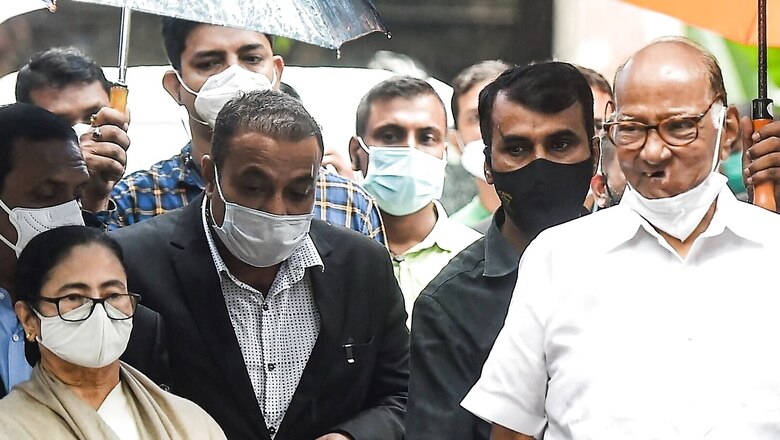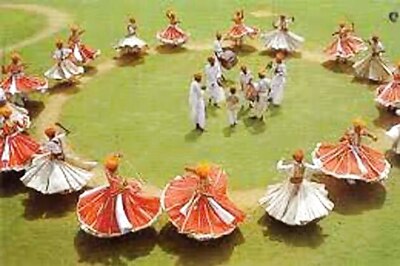
views
With the BJP-led NDA government halfway through its second term in office, the fight for occupying the centre stage in the Opposition space is clearly out in the open. Having lost power in 2014, the Congress continues to remain in a state of drift. In the Lok Sabha, while it is the largest opposition party, it has been unable to secure, in two successive elections, the seats required to be officially declared the principal opposition. Its numbers have dropped at the state level too, and it remains in power as the lead player in just three states of India. In another three states, it is the junior partner in a ruling alliance. It was unable to hold on to its governments in two states—Karnataka and Madhya Pradesh—as it saw desertions from among its elected legislators.
The real opposition to the BJP and its allies has emerged from powerful state-based parties, be it in West Bengal, Jharkhand, Telangana, Odisha and Tamil Nadu. The battle for leadership in the Opposition space that is emerging between the Congress and the Trinamool Congress (TMC) needs to be seen in this wider context.
Fresh from her victory in West Bengal, Mamata Banerjee clearly sees herself as a key player in national politics. There are several indicators of this trend. First, her party’s forays into Tripura, Meghalaya, Goa and Uttar Pradesh need to be seen in this context. Second, the entry of many senior leaders from the Congress and other opposition parties into her party in the last few weeks is also part of this larger game plan. Third, the Trinamool’s attempt to build an anti-NDA, non-Congress coalition at the national level is a step aimed at this consolidation. Finally, the frontal attacks launched by Mamata Banerjee and the TMC against the Congress and its leadership is also a part of this strategy. The fact that the Congress and its leadership are consciously seeking to isolate the Trinamool Congress (and its leadership) reflects an act of reciprocity on their part. The other players in the Opposition camp seem to have decided to wait and watch as the developments unfold.
Powerful State-based Parties
Here, it may be useful to recall that much of the BJP’s leadership campaign focus in the 2019 Lok Sabha elections was in Uttar Pradesh, West Bengal and Odisha. Incidentally, the key rivals that the BJP faces in these states are state-based parties. A strategy of the BJP that one saw unfold around the 2019 elections was further expanded in the last two years. While the ‘Congress-mukt Bharat’ agenda of the BJP remains in focus, the attention is increasingly shifting to states that have powerful state-based parties.
The inability of the Congress to recover from its 2014 Lok Sabha defeat and remaining on the sidelines in the 2019 national polls and thereafter have led to the party gradually vacating its space as a key player in the ranks of the Opposition. The leadership vacuum within the Congress and the serious divisions in the party have further added to its challenges. In state Assembly elections, it has been unable to effectively challenge the BJP in a straight fight, save in Rajasthan and Chhattisgarh. In many states, the principal electoral contest is now between a powerful state-based party and the BJP, with both the Congress and Left parties being pushed to a distant third position. This is true in West Bengal, Tripura, Telangana, Uttar Pradesh and Odisha. It is in the light of these two developments that one notices the efforts being made by Mamata Banerjee and her Trinamool Congress to emerge as the nucleus of a national opposition to the BJP-led NDA.
Focus on Alternative Leadership or Policy Choices?
Two issues merit attention in this regard. Will an anti-BJP coalition be built around alternative leadership or substantive policy and programme choices? The BJP would love the contest to be a leadership battle as they would see themselves having a distinct advantage. Further, for the Opposition to come together on the leadership question is truly a tall order and could well be its undoing. In settling the leadership question, the Opposition parties could well be frittering away time and effort and in the process allowing their opponent to steal a quick march ahead.
Now, coming to the issue of substantive policy and programme choices. Would the Opposition seek to come together with an alternative agenda of policy priorities and programme options? Such an option would ensure that the focus of the contest is on critical issues of policy and governance. A Common Development Programme (not a Common Minimum Programme—where the focus is on maximisation and not a minimal level of consensus as in the past) would steer the debate away from personalities and individuals to people’s issues and priorities and the alternate pathways. This would involve comprehensive and solid ground work (on both sides) and possibly lead to a more meaningful dialogue between the political opponents on substantive issues of livelihood and development.
The author is currently the Vice Chancellor of Jagran Lakecity University. The views expressed in this article are those of the author and do not represent the stand of this publication.
Read all the Latest Opinions here




















Comments
0 comment